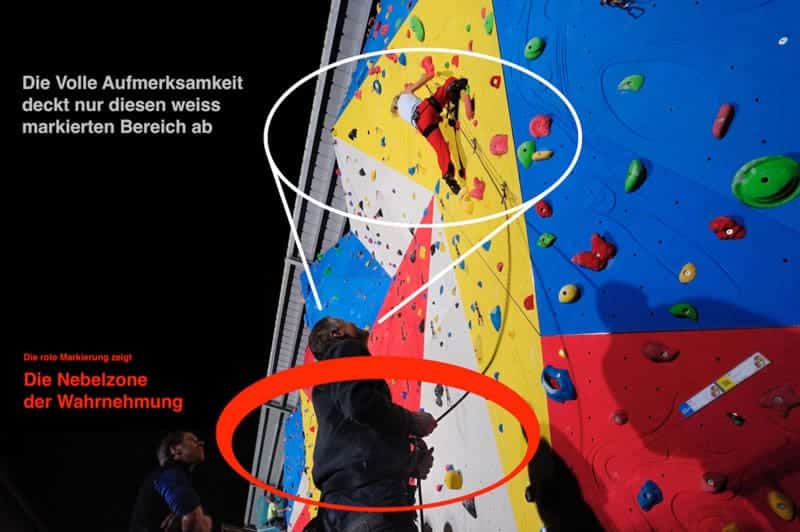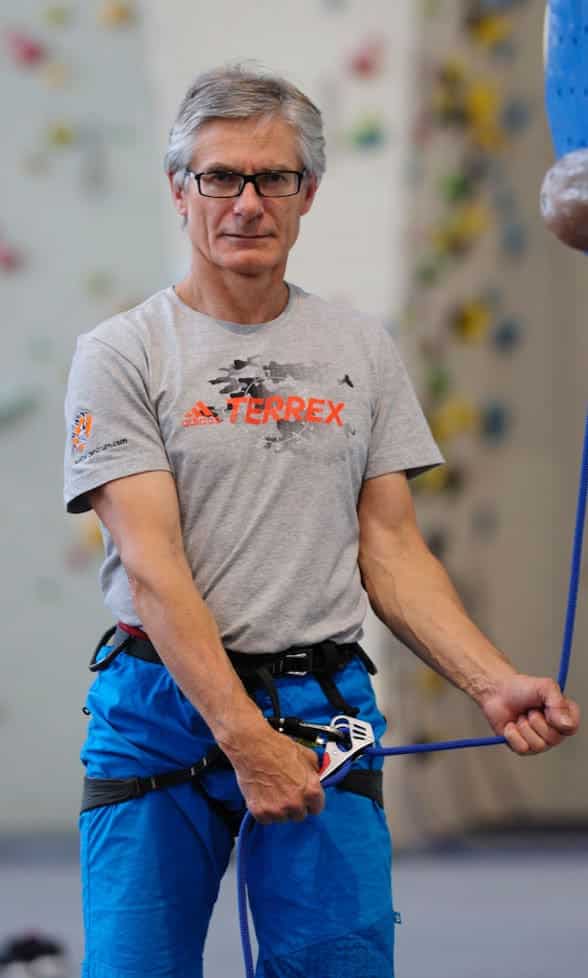The correct securing during rope climbing was much written and extensively discussed in German-speaking countries. Nevertheless, Walter Britschgi demands a rethink. We met him at the climbing hall St. Gallen to learn more about his safety concept. Based on his extensive observations and findings from accident investigations, the safety officer of the climbing center Gaswerk delivers a novel operating concept for belay devices and presents it in today's guest contribution: The two-hand sensor.
A guest contribution by Walter Britschgi - safety expert at the Gaswerk climbing center
In the course of the last few years there have been falls on the hall floor despite full attention, compliance with the braking hand principle and correct hand position. That is a remarkable fact. You want to be sure of belaying not only for gyms and climbing gardens, but also in the mountains. Everyone wants to secure properly and everyone believes they are properly secured. But the handling is in a kind of fog zone of perception. In the course of my 20 years as an accident investigator, a high level of significance was found in determining the cause. The main cause of falls to the ground is the unwitting, habit-related mishandling of the rope and device. However, this cannot be blamed on any specific target group. Everyone is affected - everyone, from beginners to experts. Often it is just a faulty detail that recurs with almost every safety movement. Outsiders who take a closer look usually recognize the error immediately. However, sometimes it can hardly be seen.

What matters when saving
Let's start at the base. There is no question that a fall can only be kept by the timely grip of the braking hand. But this gripping must also be guaranteed ...
- if the belayer just does not look up
- when the climber is out of sight
- when the brake hand is tunneling
- when the sensor hand is tunneling
- if the belayer with the thoughts is somewhere else or if the belayer is totally distracted
- when the belayer is in conversation with the neighbor, the latter not being understood as a license
Looking for a concept, which should have a higher reliability than the previous attributes: full attention, brake hand principle and correct hand position.
The operating concept of the two-hand sensor
The two-hand sensor I see as the new operating concept in the field of cable and device operation. It is the basis for higher reliability; in any case higher than was possible with the previously favored factors.
Basic attitude and function of the two-hand sensor
Both hands easily clamp the rope when they are not busy. As soon as one hand has to tunnel - no matter which one - the other remains in the clamped position. It's that simple. With the two-hand sensor, the braking hand and (!) Sensor hand are alternately ready. While the braking hand is tunneling, the sensor hand must hold the rope sensitively and with light clamping pressure; lying in wait, so to speak. This is the only way to reliably identify a fall load as such and at the same time distinguish it from a quick attempt to clip the rope. If the sensor hand tunnels, the braking hand must "be attentive". One of the two hands is always attentive and thus offers a permanent connection with the climber. A constant readiness that works, despite distractions from visual and acoustic environmental stimuli. Simply because the sense of touch, which is blind and deaf in itself, cannot be distracted. Therefore the term fits - To take the attention in the hands - so good.
Take the readiness attitude
The prepared posture described below works by taking a kink in the course of the rope. The sensor hand is located only slightly laterally of the body. She keeps the rope in touch with the actions of the leader. She is thus constantly on the watch. The adaptation of this attitude is quite difficult, because it should be taken again and again after each issue of rope. It will take some time for it to become a habit. Note: no slack rope!

The fast rope issue
The quick rope payout is the most difficult part of belaying. This applies to all devices. Only one hand is allowed to tunnel at a time - the other clamps the rope. D.hat is easier said than done. The more you hurry, the more difficult it is to implement this requirement. Trainers are particularly required to pay attention to the movements of the hands of their protégés, because these hands are in the foggy zone of perception. However, an exact execution is absolutely necessary, because caution, even a short stretch of tunnel - with both hands at the same time - can lead to an accident, as an accident analysis carried out by me revealed.
About the guest author Walter Britschgi
Walter Britschgi is a Swiss sports climber, mountaineer, forward thinker and inventor with practical and solution-oriented approach in climbing sport. As a climber, he climbed through many classic rock and ice walls in the Alps. His first ascents in the rock are very well secured with bolts.
For two decades he has worked as a security officer in the climbing center Gaswerk. There, the further development of security is strongly influenced by a core team of experts from different areas of the company. The management makes this elaborate collaboration possible, which ultimately goes far beyond the otherwise usual in climbing gyms mass.

